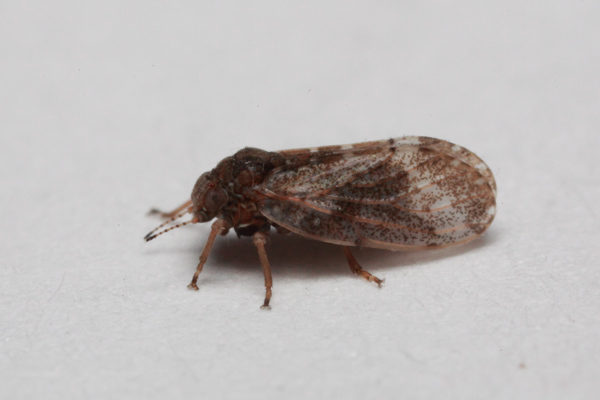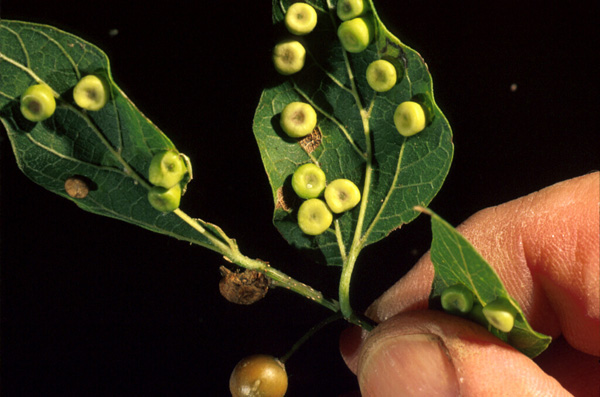If you’ve ever noticed nipple-like swellings on hackberry leaves, you already know a little about the hackberry nipplegall maker, Pachypsylla celtidismamma. Pachypsylla is a genus of tiny insects that grow up inside galls that form on hackberry leaves. Like other gall makers, Pachypsylla adults lay their eggs on leaves, which then start to swell around the egg or developing larva, forming a gall. After feeding on the gall tissue all summer, Pachypsylla adults emerge in the fall.
Unfortunately for fastidious homemakers, these adults commonly enter structures at this time in their search for a warm place to hang out and, perhaps, catch some football or prime time TV during the winter. This week I’ve had multiple reports of Pachypsylla home invasions here in north Texas. Most calls are accompanied by deep concern that these tiny (2 mm, or about 1/8-inch) insects might be harmful.

Pachypsylla adults (about 1/8-inch long) are commonly found at this time of year indoors, around windows.
The good news is that hackberry nipple-gall insects are pretty harmless. They do not bite, do not eat clothes and do not hog the remote. Apart from needing to be vacuumed up from windowsills occasionally, you shouldn’t be too inconvenienced by these insects.
If the presence of any six legged visitors is too disturbing, check outside to see where these little guys might be getting in. In most cases, poor seals around your windows are the culprits. Caulking and sealing windows and door will not only keep insects out, it can reduce your energy bills too! Insecticides should not be necessary, though an outdoor (long-lasting residual) spray applied to the outside edges of windows might slow the invasion some. If you find that the invasion is an annual occurrence, the only permanent fix is to remove nearby any hackberries and replace them with another well-adapted tree.
According to the Encyclopedia of Insects, the exact mechanism by which insects induce plants to form galls is poorly understood, but it involves chemicals applied to or injected into the plant that influences plant growth hormones. In the case of Pachypsylla, the plant responds to its springtime egg laying by forming round, nipple-like galls on the undersides of developing leaves. Each gall surrounds a growing Pachypsylla nymph. In the fall mature adults emerge from these galls and search for a protected site to spend the winter.

